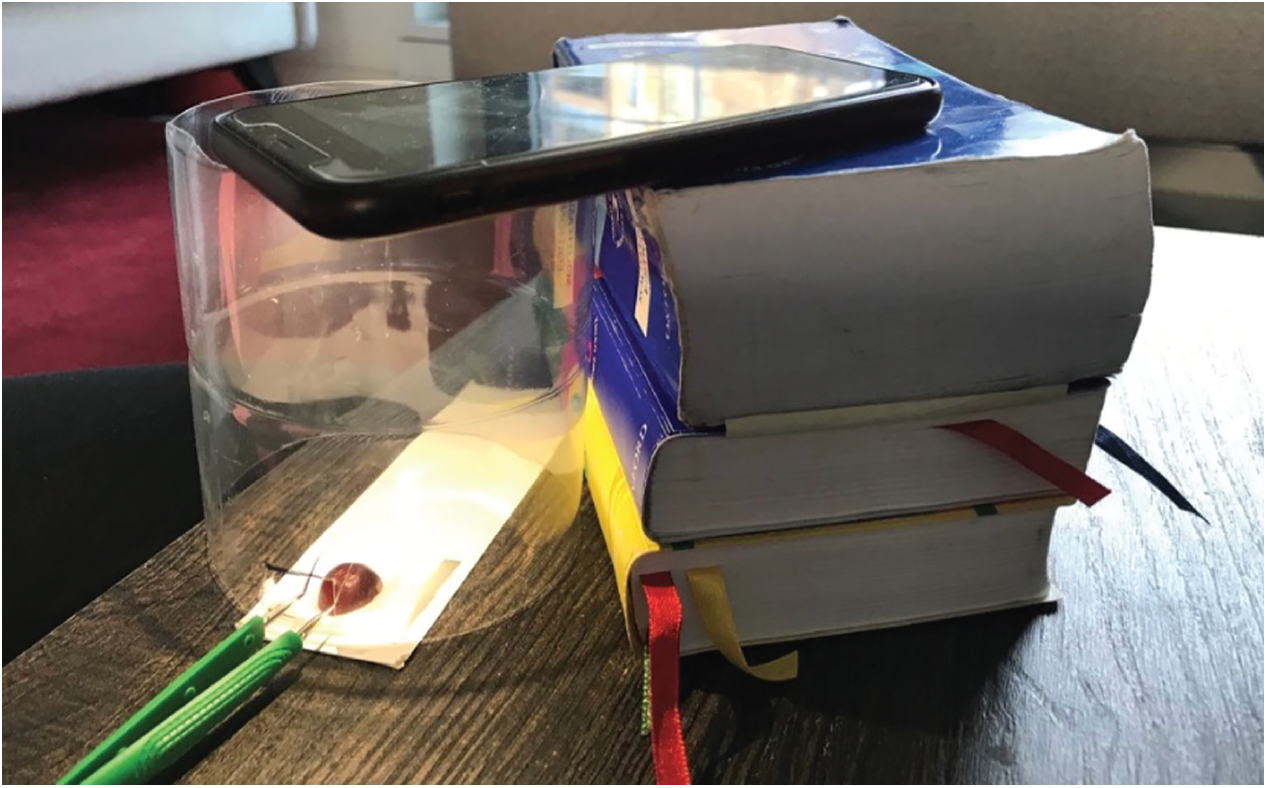Not just for eating: Grapes and potatoes help surgery trainees hone skills
The pandemic has impacted ophthalmic surgical training. Exercises have been developed to provide key skills that can be practised simply at home and require no special equipment.
Ophthalmic surgical training has been gravely affected worldwide by the COVID-19 pandemic.1 In an international survey, up to 53.1% of ophthalmology residents and 34.4% of fellows admitted being unable to perform cataract surgery during the pandemic and, similarly, 56% of the former and 51.1% of the latter cited a lack of simulation-training facilities in their hospitals.2
Microsurgical simulation typically relies on specialist equipment with an operating or portable microscope or utilises virtual-reality simulators such as the EyeSi.3 These simulation options are thus not only location-specific but also time- and resource-intensive and associated with high costs.
Given these challenges, we have devised a smartphone-based, practical, low-cost, easily reproducible and realistic intraocular microsurgical simulation modality that can be used at home. The focus of the simulation exercise is four skills that are core to cataract surgery: corneal incisions, capsulorhexis, wound suturing and general manual dexterity microsurgical skills.
A range of exercises—including the necessary equipment and set-up—were developed by the authors for each of the core skills. These were based on similar techniques described in another cataract simulation study whereby everyday basic materials were utilised to mimic the various steps of cataract surgery and then subjectively validated with high levels of concurrence through a questionnaire study amongst ophthalmologists of all grades in the UK.4
Figure 1. Smartphone set-up for home microsurgical skills practice.

For each skill, a smartphone (iPhone X with iOS 13.5.1, Apple) was balanced on a pile of books (height: 10.5 cm) such that the smartphone camera was overhanging the books and looking down at a work surface (Figure 1). The camera was used in video mode with × 2 zoom; phone torch illuminations were used if required.
Easily available items
The equipment necessary includes easily available everyday materials such as grapes, superglue, potatoes, drinking straws, poppy seeds and orange peel.5 The practice can be recorded and discussed with a trainer for feedback.
The rationale and aim behind the exercises are to provide a low-fidelity means of practising manual dexterity for ophthalmic surgery when access to well-equipped surgical simulation suites is limited. For example, performing corneal incisions on grapes (Figure 2) is useful practice for cataract surgery incisions and access to the anterior chamber.
Capsulorhexis on potato skins (Figure 3) directly correlates with the capsulorhexis step of cataract surgery. As for the manual dexterity exercises (Figures 4 and 5), they emulate instrument manipulation in a confined space, whilst orange peel (Figure 6) provides a durable yet pliable surface for suturing practice.
The authors acknowledge and accept that these exercises do not mimic real ophthalmic surgery steps; however, they do require hand-eye coordination and can enhance muscle memory when performed regularly. The ubiquitous role of smartphones in our daily lives allows for frequent access and practice; the set-up is low maintenance and has no requirement for formal approvals/licences, plus the microsurgical simulation set-up can be safely recreated in the home environment.
Therefore, we believe that by simplifying simulation training methods and enabling trainees to practice in the comforts of their own home or at the workplace, our intraocular microsurgery simulation model provides an easy, feasible, realistic, practical option. Assuming most trainees have access to a smartphone and basic disposable surgical instruments, our models do not require any additional expense, thereby minimising cost and resource barriers.
References
1. Hussain R, Singh B, Shah N, Jain S. Impact of COVID-19 on ophthalmic specialist training in the United Kingdom—the trainees’ perspective. Eye (Lond). 2020;34:2157-2160.
2. Ferrara M, Romano V, Steel DH, et al. Reshaping ophthalmology training after COVID-19 pandemic. Eye (Lond). 2020;34:2089-2097.
3. Ferris JD, Donachie PH, Johnston RL, et al. Royal College of Ophthalmologists’ National Ophthalmology Database study of cataract surgery: report 6. The impact of EyeSi virtual reality training on complications rates of cataract surgery performed by first and second year trainees. Br J Ophthalmol. 2020;104:324-329.
4. Kaur S, Shirodkar AL, Nanavaty MA, Austin M. Cost-effective and adaptable cataract surgery simulation with basic technology. Eye (Lond). 2021. DOI:10.1038/s41433-021-01644-5.
5. Golash V, Kaur S, Naveed H, Nanavaty MA. Low-tech intraocular ophthalmic microsurgery simulation: A low-cost model for home use. Indian J Ophthalmol. 2021;69:2846-2850.

